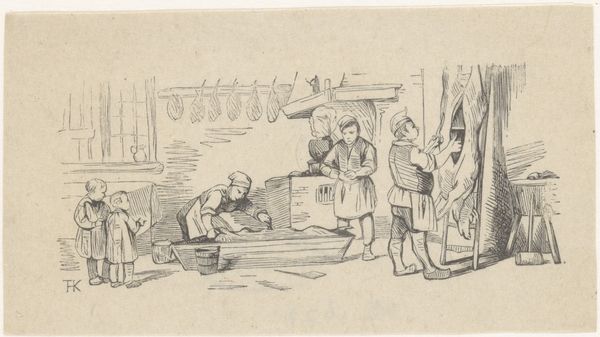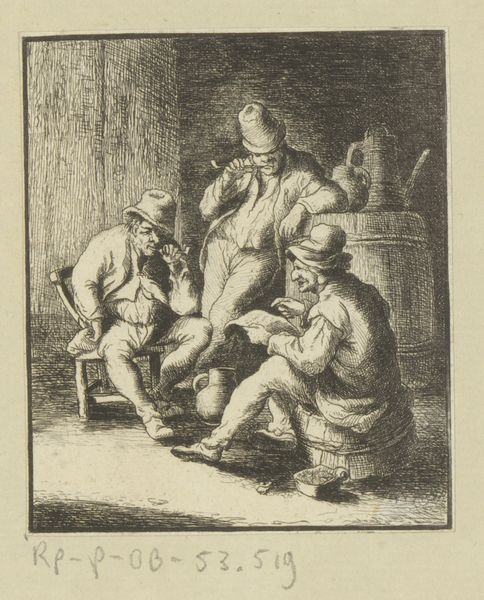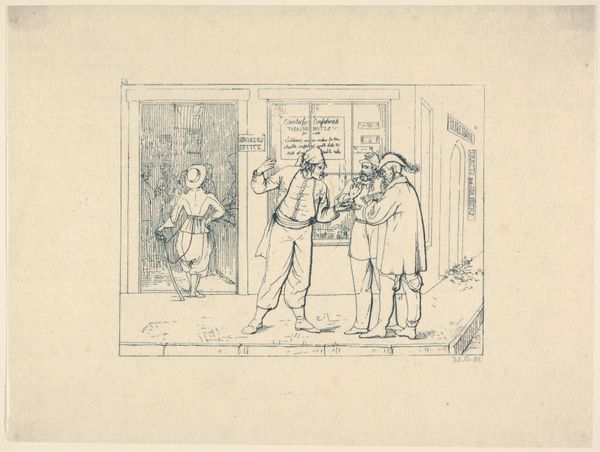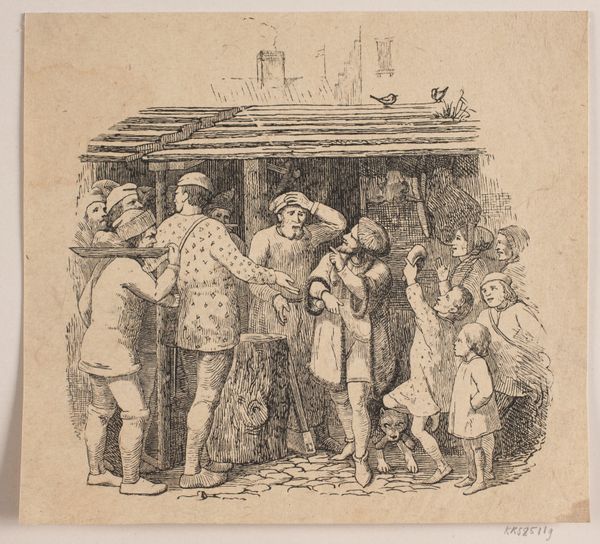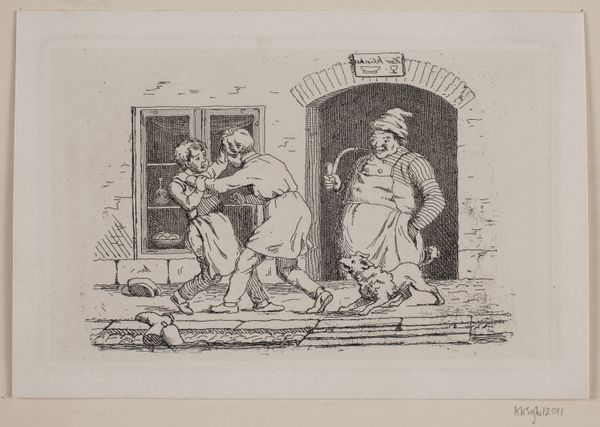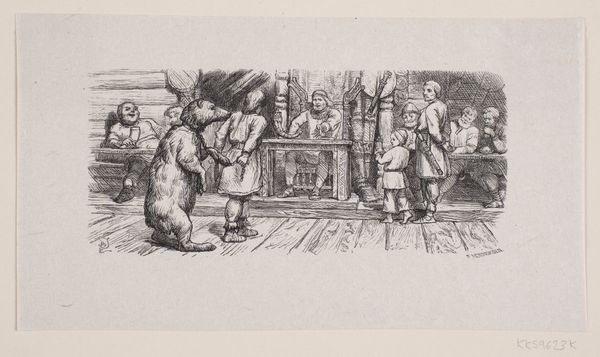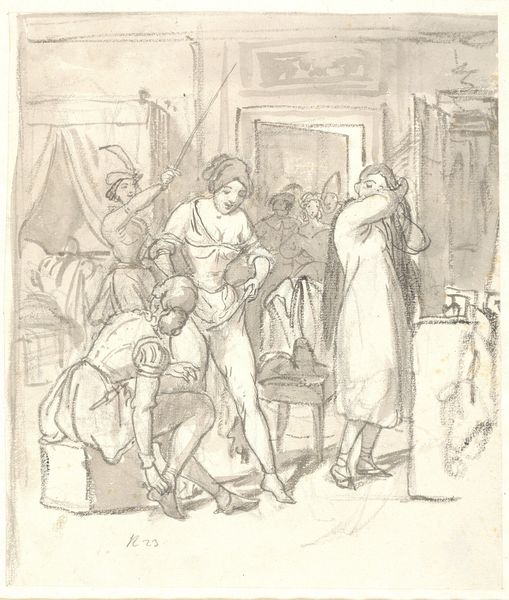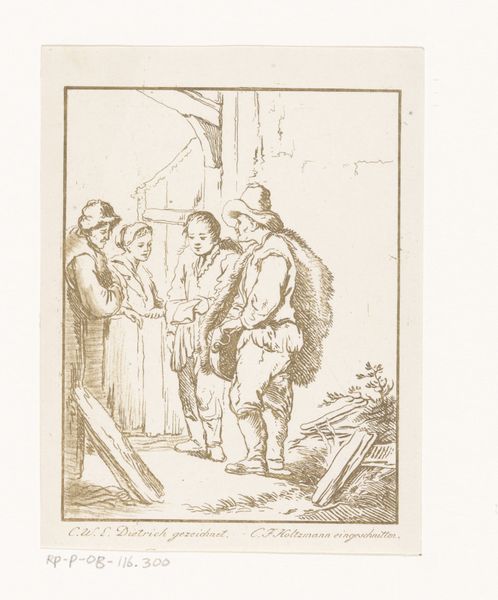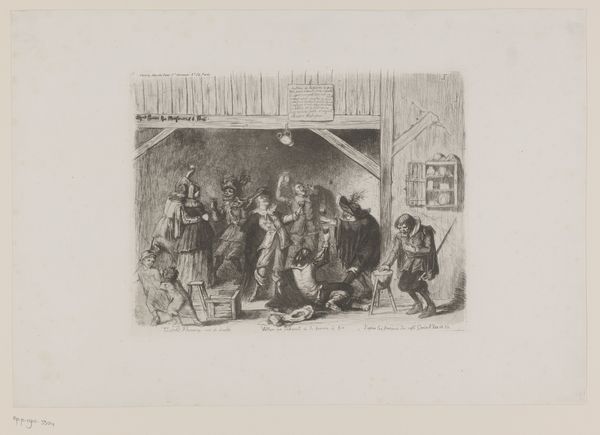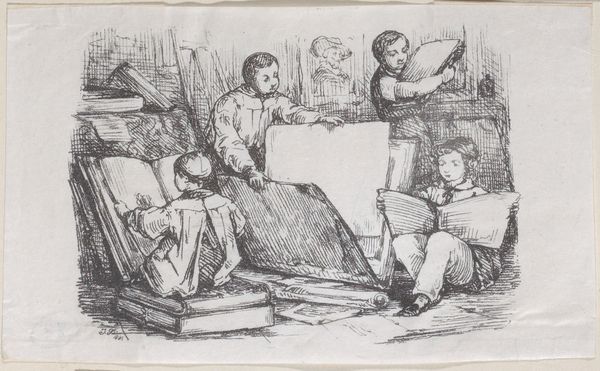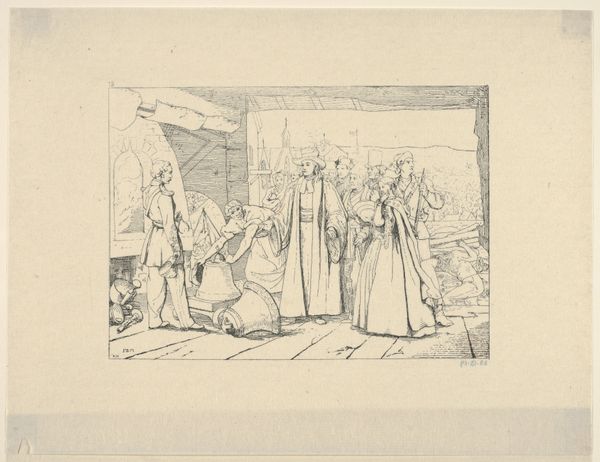
Illustration til Adam Oehlenschlägers digt "De to kirketårne" 1844
0:00
0:00
print, engraving
#
medieval
# print
#
figuration
#
romanticism
#
line
#
history-painting
#
engraving
Dimensions: 89 mm (height) x 152 mm (width) (bladmaal)
Editor: So, this is "Illustration til Adam Oehlenschlägers digt "De to kirketårne"" created by Lorenz Frølich in 1844. It’s an engraving. I'm struck by its depiction of what seems like a historical scene. It’s quite intimate, yet something feels…performative about it. How do you interpret this work? Curator: The performativity you're sensing speaks volumes. Let's unpack that in the context of its creation, during the rise of Romantic nationalism. Frølich visualizes a poem by Oehlenschläger, positioning it within a very specific historical and cultural discourse. Consider the way the artist uses a medieval aesthetic. What social and political narratives might be embedded in this visual language? Editor: I guess I see that medievalism could connect to ideas about national identity… something about going back to a "pure" origin? Curator: Precisely. It evokes a sense of authentic, national past that often ignores social complexities. The focus on an idealized past frequently served to justify contemporary power structures, including patriarchal structures and class divisions. Editor: So, even something seemingly innocuous, like an illustration, can subtly reinforce social hierarchies? Curator: Absolutely. And the visual language – the clothing, the setting, even the way the figures interact – all contribute to constructing that idealized and often exclusionary narrative. Consider the figures' gestures; who is at the center of the image, who is marginalized? What does this say about societal roles? Editor: I see what you mean. It’s a potent reminder that even seemingly romantic depictions of the past are actively shaping how we understand the present and imagine the future. I will look at the work more closely now, keeping your perspectives in mind. Curator: Precisely! Hopefully, thinking about the image in this way will enrich the viewer's personal encounter with the artwork and open avenues to explore the visual representation of history.
Comments
No comments
Be the first to comment and join the conversation on the ultimate creative platform.

